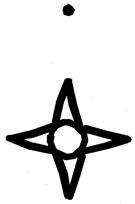Anthropology, Department of

Nebraska Anthropologist
Date of this Version
2008
Document Type
Article
Abstract
During the last twenty-four years archaeologists have proven that we are now able to investigate a previously inaccessible part of the archaeological record: the battlefield. These fields of conflict, once inaccessible due to their nature, have become accessible to archaeologists through the use of metal detectors, the global positioning system (GPS), remote sensing, historical documents, maps, photographs (aerial and period), and the geographic information system (GIS), among the traditional methods used in archaeological research, such as surface surveys and excavation. However, battlefield archaeology's current scope is limited to those conflicts recorded by history. Is it possible for battlefield archaeologists to cross the threshold from the historic to prehistoric period and investigate North American warfare before European American-American Indian conflicts, the arrival of the gun, or even pre-contact times? In order to determine if this is possible it is necessary to consider the characteristics of the warfare waged in North America and how it varied between regions and through time. Questions about who participated in warfare, what their motivations were for fighting, and what archaeological remains would be indicative of a conflict will need to be considered by battlefield archaeologists. Ultimately, it will be the methods battlefield archaeologists can utilize in their work that will determine just how far into the past warfare in North America can be investigated.


Comments
Published in Nebraska Anthropologist Vol. 23 (2008). Copyright © Andrew P. McFeaters; published by The University of Nebraska-Lincoln AnthroGroup.